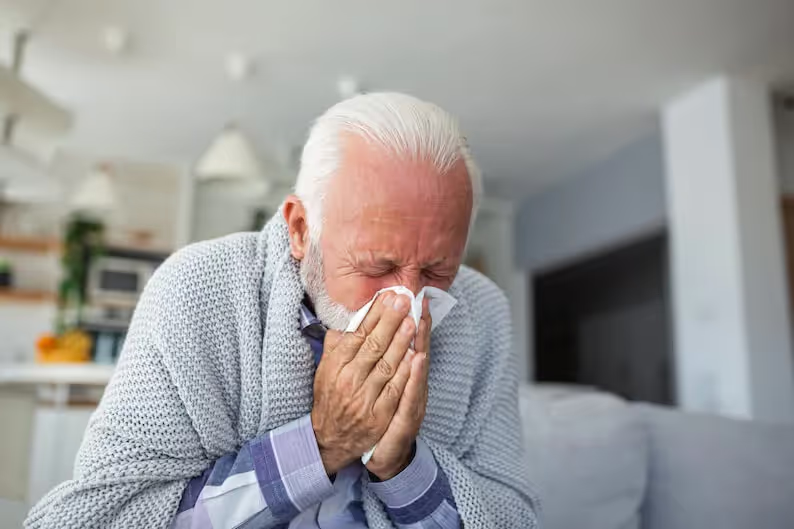Walking pneumonia, or atypical pneumonia, is a milder form of pneumonia that people often mistake for a common cold or the flu. Unlike regular pneumonia, which can be severe and require hospitalization, this type of pneumonia allows individuals to continue their daily activities despite feeling unwell.
Traditional pneumonia is usually caused by bacteria like Streptococcus pneumoniae and comes with more intense symptoms, such as high fever, severe chest pain, and difficulty breathing. It often requires stronger medical treatment and, in some cases, hospitalization.
Walking pneumonia, on the other hand, is typically caused by atypical bacteria like Mycoplasma pneumoniae or certain viruses. Since its symptoms are much milder, many people don't realize they're infected and go about their daily routines without seeking medical care.
Walking Pneumonia Symptoms
Despite its less severe nature, walking pneumonia can still be contagious, making awareness of its symptoms crucial for timely diagnosis and appropriate management. Symptoms include: Persistent Cough: A dry or phlegmy cough that lingers is a common symptom of walking pneumonia. The cough may be accompanied by chest discomfort. Low-Grade Fever: Many individuals with walking pneumonia experience a mild fever, typically below 102°F. Fatigue: Feeling unusually tired or fatigued is a common symptom of walking pneumonia. This can affect daily activities but is generally less severe than with typical pneumonia. Sore Throat: A scratchy or sore throat may be present. Headache: Mild to moderate headaches are common. Difficulty Breathing: While shortness of breath is possible, it is usually less pronounced than in typical pneumonia cases.
What Causes Walking Pneumonia
The causes of walking pneumonia underline the importance of understanding this specific bacterial infection and its potential impact on respiratory health. Causes include: Bacteria called mycoplasma pneumoniae commonly causes walking pneumonia and easily spreads in crowded places. Viruses: Various viruses, such as respiratory syncytial virus (RSV) and adenovirus, can lead to walking pneumonia. Chlamydophila pneumoniae and Legionella pneumophila: These bacteria are less common causes but can still result in walking pneumonia.
How it Spreads
Walking pneumonia is often spread through respiratory droplets, making close contact with an infected person a common mode of transmission. It is more prevalent in crowded places, such as schools and offices, where the bacteria or viruses can easily spread. A healthcare professional may conduct a physical examination and order a chest X-ray or blood test to confirm the diagnosis. Sometimes, a sputum culture may be recommended to identify the specific bacteria causing the infection.
Treatment Options
Early detection and appropriate treatment are essential in managing this respiratory infection and preventing potential complications. Treatments may include: Antibiotics: Antibiotics such as azithromycin or doxycycline are commonly prescribed for this bacterial infection. Rest and Hydration: Adequate bed rest and staying well-hydrated are crucial for a speedy recovery. Over-the-counter medications: Pain relievers and fever reducers may be recommended to alleviate symptoms. Follow-Up Care: It's important to follow up with a healthcare provider to ensure the infection is fully resolved.
Prevention Tips for Staying Healthy
Good hygiene, like washing hands often and covering mouth and nose when coughing or sneezing, can stop walking pneumonia from spreading. Avoiding close contact with infected individuals is also advisable. Walking pneumonia may not be as severe as the typical form, but it still requires proper diagnosis and treatment. If you start to feel unwell, stay home and rest. And if you experience persistent respiratory symptoms, it's essential to consult with a healthcare professional. By understanding the symptoms, causes, and treatment options, you can take proactive steps to manage and recover from walking pneumonia.




